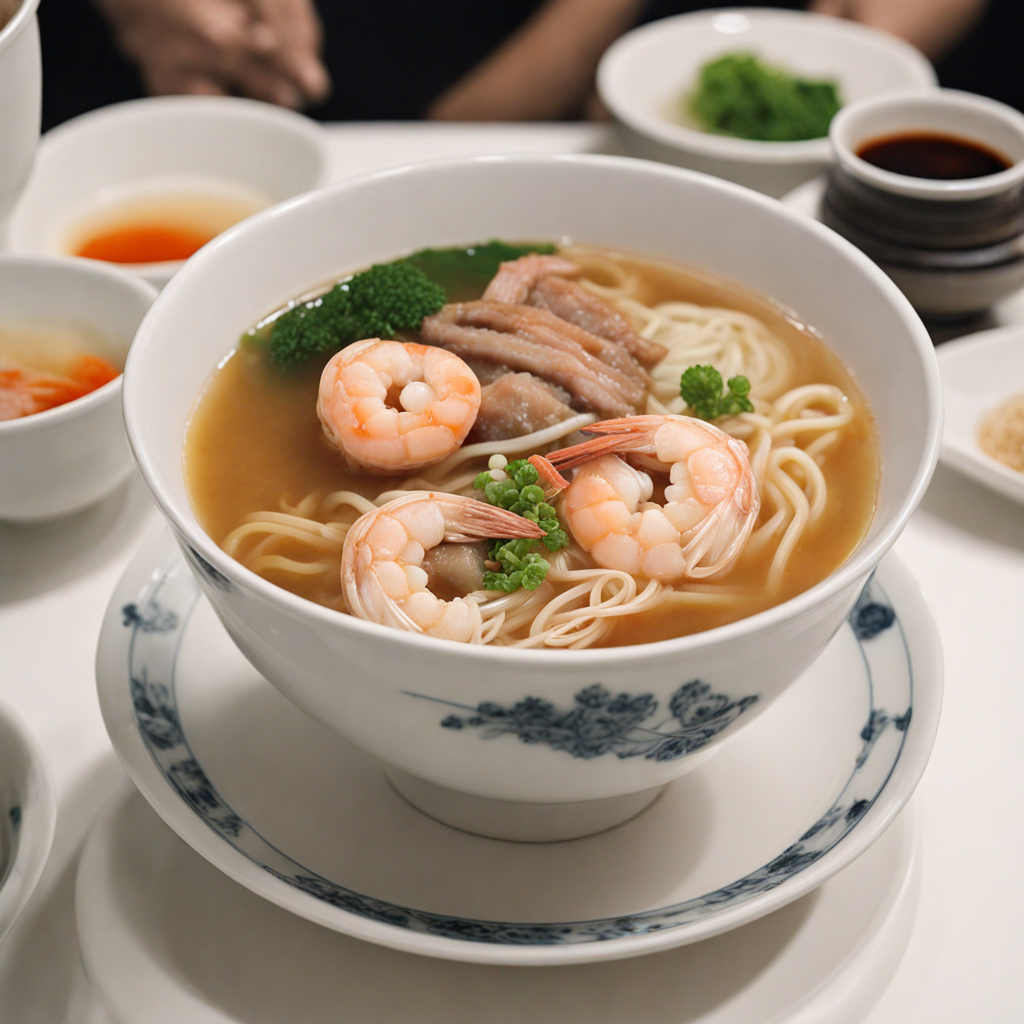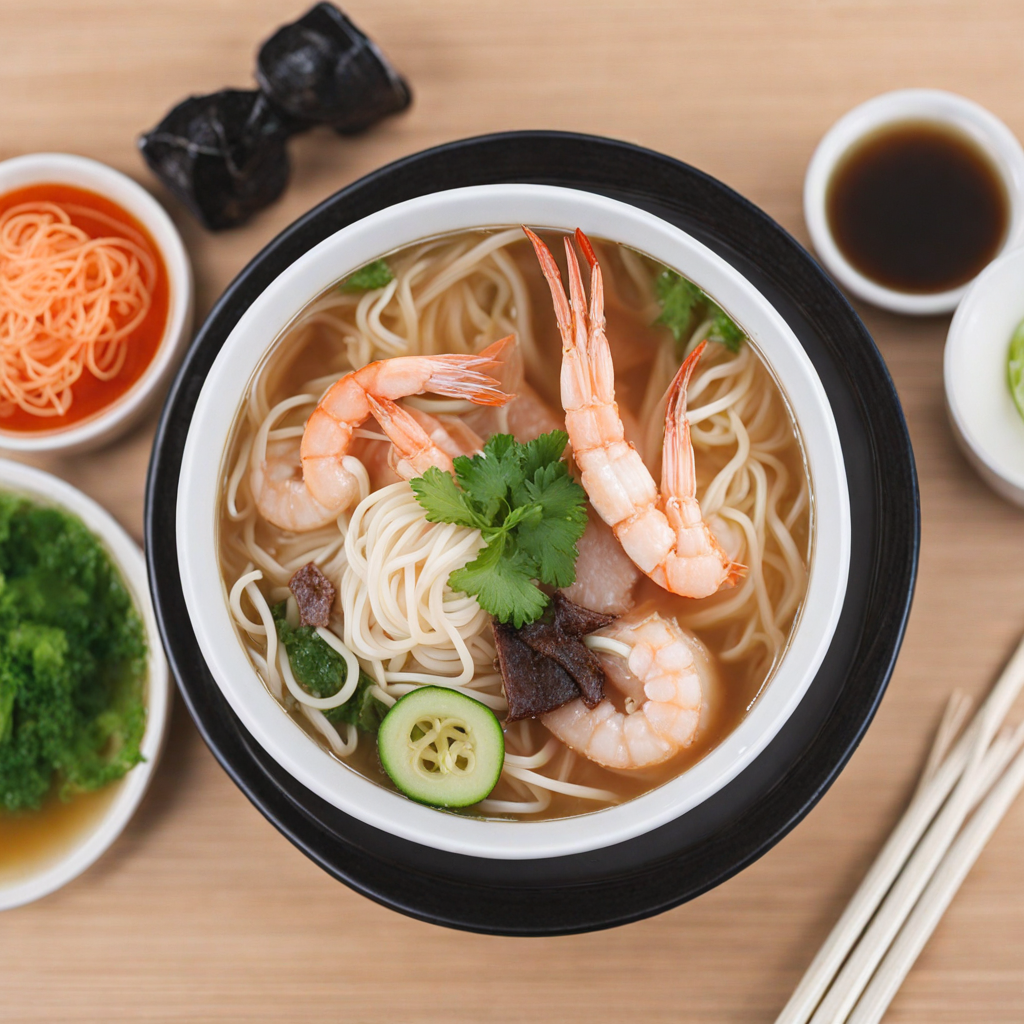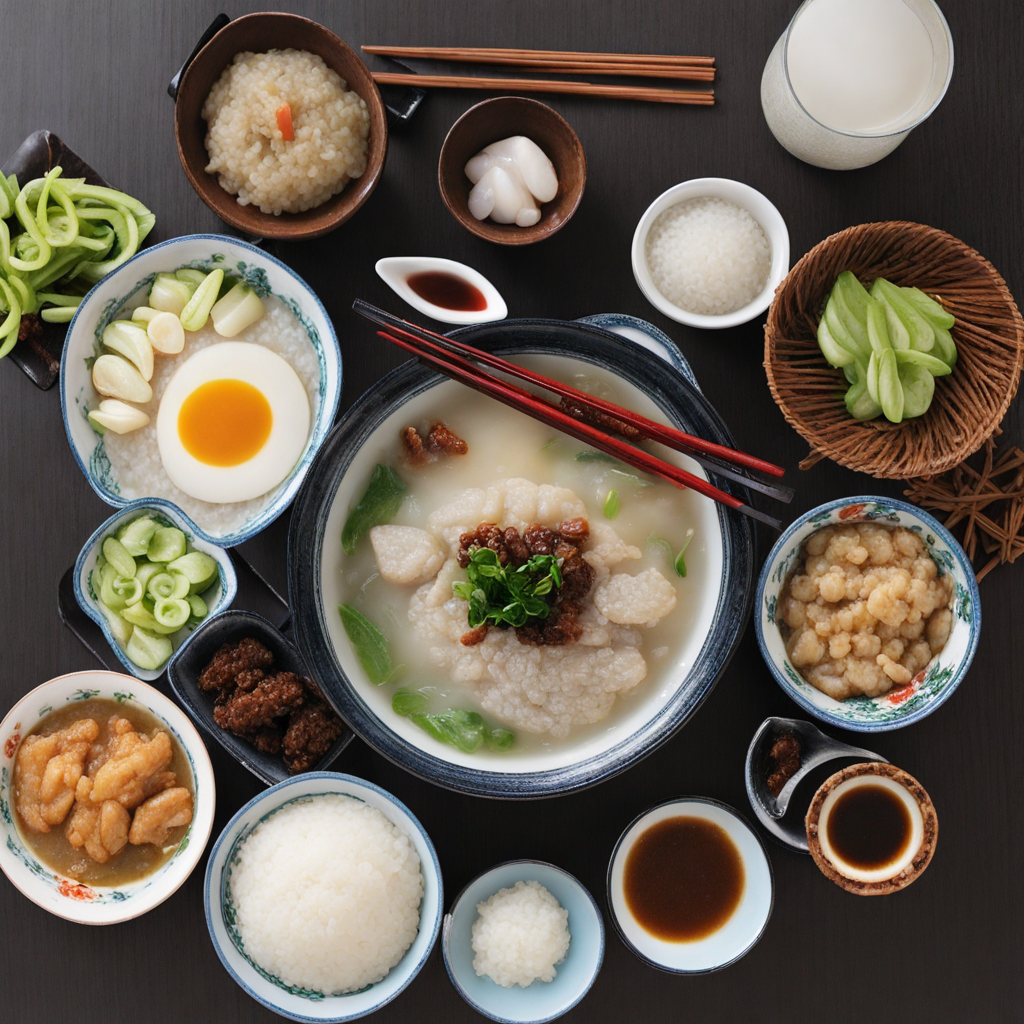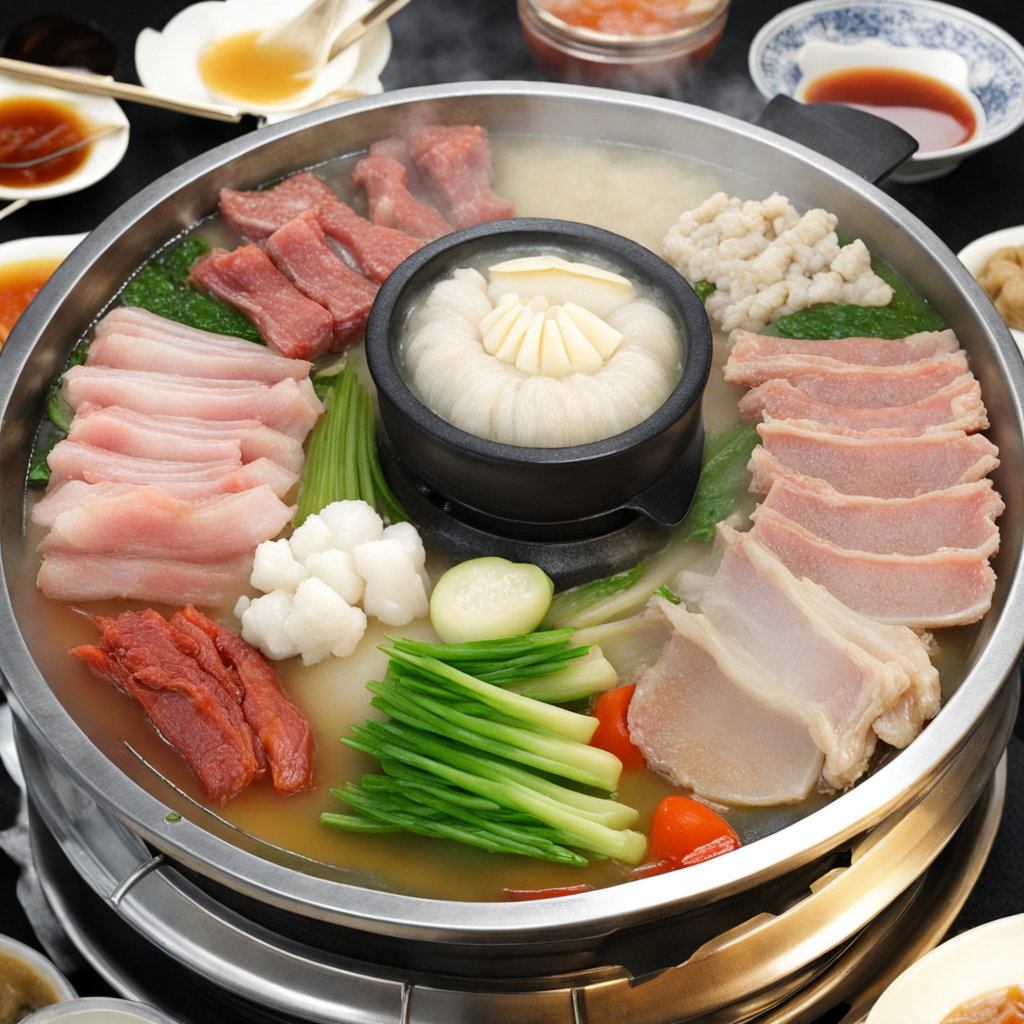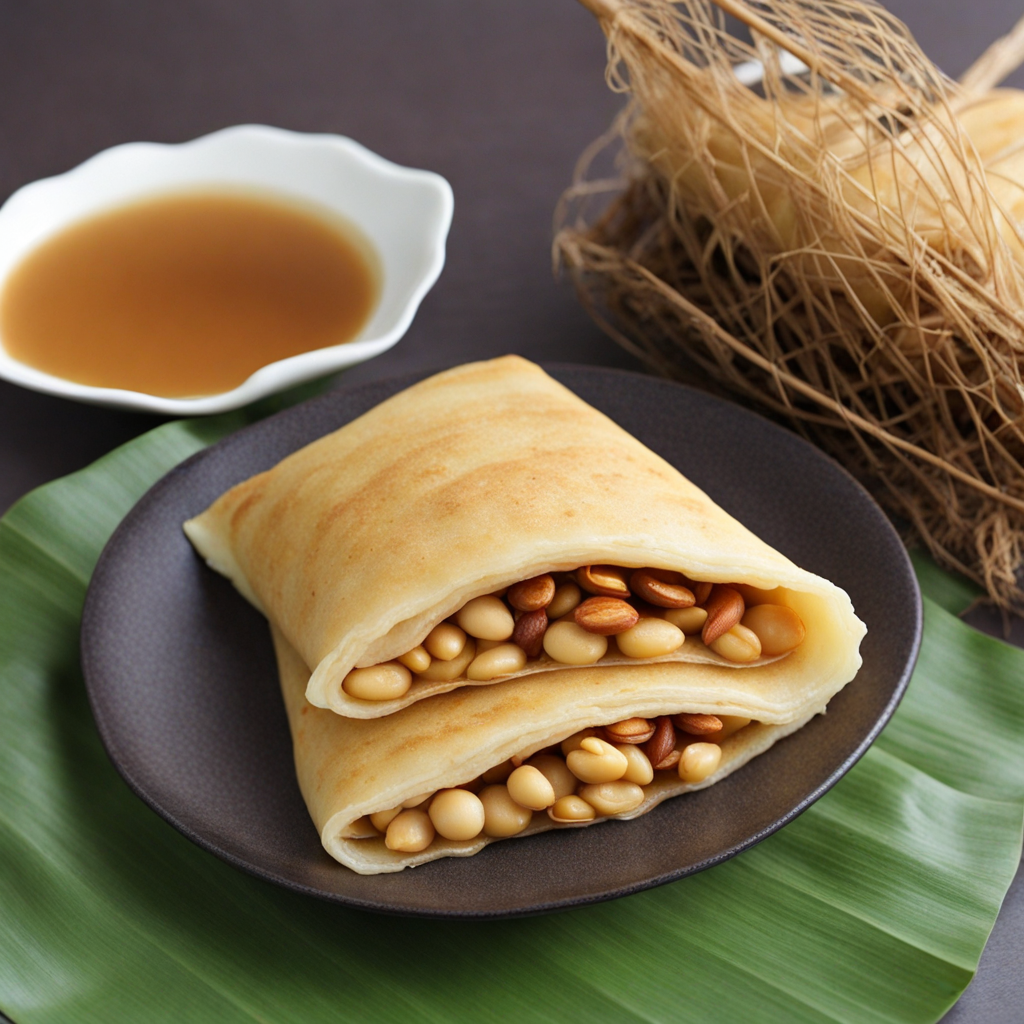Prawn Noodle Soup
Prawn Noodle Soup is a beloved dish from Singapore that tantalizes the taste buds with its rich, aromatic broth and vibrant flavors. At its core, the dish features a robust stock made from simmered prawn shells and pork bones, which infuses the broth with a deep umami essence. This savory base is then complemented by fragrant spices such as garlic, ginger, and sometimes a hint of sambal, giving the soup a delightful warmth and complexity. The broth is typically served over a bed of yellow egg noodles or rice vermicelli, allowing for the perfect balance of textures with each slurp. The star of the dish is undoubtedly the succulent prawns, which are often cooked just right to retain their sweetness and tender bite. In addition to prawns, the soup may include various toppings such as sliced pork, fish cake, and boiled eggs, each adding their unique flavor and texture. A squeeze of lime juice or a sprinkle of fresh coriander can elevate the dish further, providing a refreshing contrast to the hearty broth. It's common for diners to customize their bowls with extra chili paste or soy sauce, tailoring the experience to their palate. Prawn Noodle Soup is not just a meal; it’s an experience that reflects the vibrant culinary culture of Singapore. Often enjoyed as a comforting breakfast or a hearty lunch, this dish is a testament to the harmonious blend of flavors and ingredients that characterize Singaporean cuisine. Whether enjoyed at a hawker center or a cozy eatery, Prawn Noodle Soup invites you to explore the rich traditions and flavors of this Southeast Asian food paradise.
How It Became This Dish
The History of 虾面 (Hae Mee) in Singapore: A Culinary Journey #### Origins and Early Beginnings 虾面, pronounced as "Hae Mee" in Malay, is a beloved noodle dish that has become a quintessential part of Singapore's diverse culinary heritage. With roots deeply entrenched in the region's Chinese immigrant communities, particularly the Teochews and Hokkien, Hae Mee reflects the rich tapestry of flavors and cultures that characterize Singapore's food scene. The origins of Hae Mee can be traced back to the early 20th century, when waves of Chinese immigrants arrived in Southeast Asia, bringing with them their culinary traditions. These immigrants settled in coastal areas, where fresh seafood was readily available, which led to the incorporation of shrimp into noodle dishes. The term "Hae" translates to shrimp in Chinese, and "Mee" refers to noodles. Thus, Hae Mee literally means shrimp noodles, showcasing its primary ingredient. The dish gained prominence in the bustling street food culture of Singapore, where hawkers began to sell Hae Mee from their stalls. The Hokkien community, known for its expertise in seafood, played a significant role in popularizing the dish. They emphasized the use of fresh, local ingredients, making Hae Mee a staple that appealed to both locals and visitors alike. #### Cultural Significance Hae Mee is more than just a dish; it is a symbol of community and cultural identity in Singapore. The dish embodies the spirit of multiculturalism that defines the nation, as it draws influence from various culinary traditions, including Malay, Indian, and Peranakan (Straits Chinese) cuisines. The dish is often served in a flavorful broth made from simmering shrimp shells and bones, complemented by a medley of spices and aromatics. This process of making broth is emblematic of the communal aspect of cooking, where families and friends gather to prepare meals together. In addition to its culinary charm, Hae Mee has found its place in the social fabric of Singapore. It is often enjoyed during family gatherings, festivals, and celebrations, serving as a comfort food that brings people together. The dish is also associated with auspicious occasions, especially during the Lunar New Year, when families consume Hae Mee as a symbol of longevity and prosperity. #### Evolution Over Time As Singapore evolved into a global metropolis, so too did its food culture. The 1960s and 1970s marked a significant period for Hae Mee as it adapted to the changing tastes of Singaporeans. With the rise of hawker centers, where a myriad of food vendors showcased their specialties, Hae Mee became more accessible to the masses. The dish saw variations in preparation styles and ingredients, resulting in numerous interpretations across different stalls. One notable evolution of Hae Mee is the introduction of chili paste, which added a spicy kick to the already flavorful broth. This adaptation appealed to the local palate, as Singaporeans developed a penchant for spiciness in their cuisine. Additionally, vendors began to experiment with toppings, including fried shallots, boiled eggs, and vegetables, enhancing the dish's texture and flavor profile. The late 20th century saw Hae Mee gaining recognition beyond the confines of hawker centers. As Singapore positioned itself as a culinary destination, chefs began to elevate traditional dishes like Hae Mee, introducing modern twists and gourmet presentations. Restaurants started offering Hae Mee with premium ingredients such as lobster and scallops, catering to a more upscale clientele while maintaining the essence of the dish. #### Contemporary Hae Mee In recent years, Hae Mee has continued to evolve, reflecting the trends of health-conscious eating and sustainability. With an increasing awareness of environmental issues, some vendors have opted to source shrimp and seafood from sustainable fisheries, ensuring that the dish remains not only delicious but also ethically responsible. The introduction of gluten-free and whole-grain noodles has also expanded the dish's appeal, allowing it to cater to a wider audience. Furthermore, the rise of social media has played a significant role in promoting Hae Mee as a must-try dish for both locals and tourists. Food bloggers and influencers have shared their experiences with Hae Mee, showcasing its vibrant colors and enticing presentation. This visibility has led to a resurgence of interest in traditional foods, as younger generations seek to reconnect with their cultural heritage. #### Hae Mee in Modern Singapore Today, Hae Mee stands as a testament to Singapore's culinary diversity. It is featured prominently in hawker centers, food courts, and upscale restaurants alike. The dish has also inspired chefs to create fusion versions, incorporating elements from other cuisines, such as Thai or Japanese, resulting in innovative dishes that still honor the original concept. Moreover, Hae Mee has earned its place in Singapore's food festivals and events, where it is celebrated as part of the nation's gastronomic identity. The annual Singapore Food Festival often highlights traditional dishes like Hae Mee, emphasizing the importance of preserving culinary heritage in a rapidly changing world. The dish’s adaptability has also made it a subject of culinary experimentation across the globe, as chefs in various countries attempt to recreate this flavorful noodle dish, often adding their unique spin. This global interest not only showcases the dish’s versatility but also highlights Singapore’s influence in the international food scene. #### Conclusion In conclusion, 虾面 (Hae Mee) is more than just a delicious noodle dish; it is a reflection of Singapore’s rich cultural heritage and the evolving nature of its culinary landscape. With its origins rooted in the traditions of Chinese immigrants, its cultural significance as a family and community favorite, and its continuous adaptation to modern tastes, Hae Mee epitomizes the spirit of Singapore’s food culture. As the dish continues to evolve and inspire, it remains a cherished symbol of unity, diversity, and the enduring love for food in Singapore. Whether enjoyed in a bustling hawker center or an upscale restaurant, Hae Mee is a dish that transcends time, bringing people together in celebration of flavors and traditions.
You may like
Discover local flavors from Singapore


